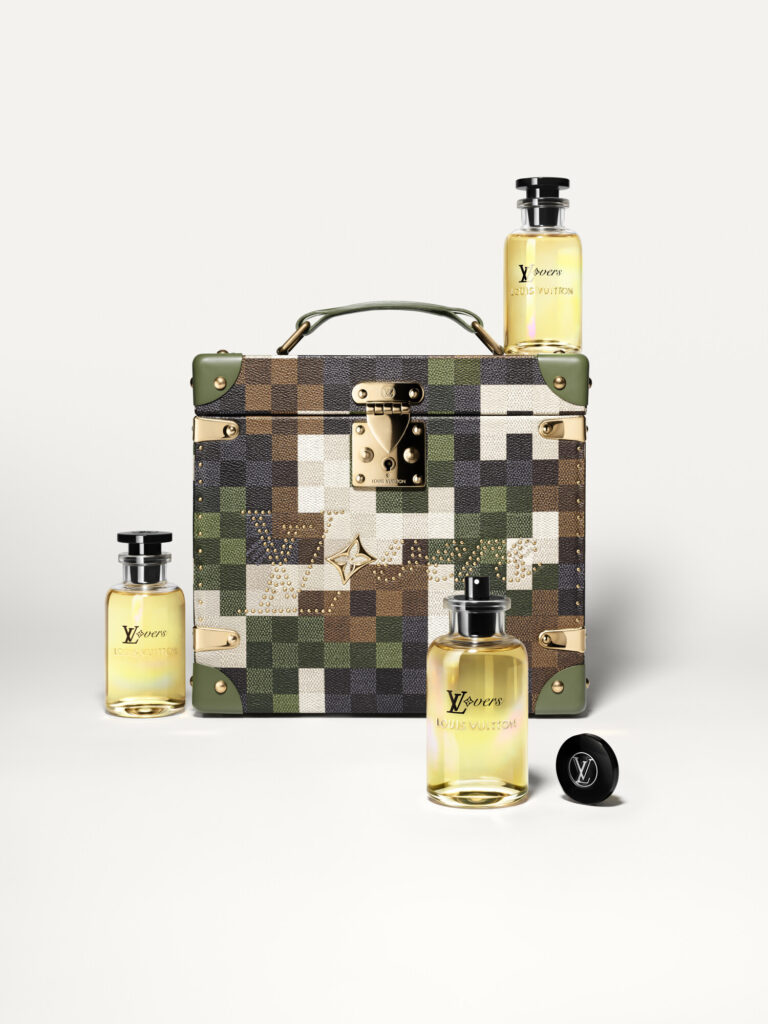From San Francisco to Paris: Fashion’s Denim Rebellion
Born in the gold rush and immortalised by Levi’s, denim is the fabric of San Francisco’s rebellious spirit. Once a symbol of workwear, it has been reinterpreted by luxury Maisons — proving its versatility beyond the classic jean. From John Galliano’s theatrical denim creations at Dior to the enduring appeal of the Canadian tuxedo, denim has evolved into a high-fashion statement. The Fall/Winter 2025 collections continue to push the boundaries, showcasing denim in couture, tailoring and unexpected silhouettes. What started as an invention for the American worker became the uniform of progress. Worn by miners, cowboys, rebels, rock stars, presidents and everyday men and women, these functional pieces were the clothes people not only worked in — they lived their lives in, too.
Levi’s & San Francisco’s Origins of Denim


The story of denim begins in San Francisco with Levi Strauss, who in 1873 — along with tailor Jacob Davis — patented the first pair of riveted denim jeans. Initially designed as durable workwear for miners and labourers, Levi’s quickly became an enduring American icon. But what started as purely practical attire soon caught the attention of designers who saw the rebellious undertones in denim. As it moved from function to fashion, denim’s transformation mirrored a broader cultural shift — one that embraced the power of reinvention.
However, the success of denim’s journey in fashion did not stop with Levi’s. What began as a necessity for labourers soon caught the attention of designers who saw it is potential to go beyond jeans. Its rugged practicality made it a symbol of counterculture movements, from rock stars to runway muses and ultimately, a canvas for luxury fashion experimentation. Luxury designers took denim beyond its blue-collar roots, reshaping it with intricate tailoring, embellishments and avant-garde silhouettes. Today, denim is no longer just a workwear staple but rather a statement of reinvention, continuously reimagined by the world’s most prestigious fashion houses.
The “Canadian Tuxedo”

The term “Canadian Tuxedo” is said to originate from a legendary fashion moment involving American singer Bing Crosby in 1951. Crosby and his friend were reportedly denied entry into a luxury Vancouver hotel because he was wearing an all-denim outfit. When Levi’s caught wind of the incident, they designed a custom denim tuxedo jacket for him, complete with a leather patch inside that read, “Notice to All Hotel Men: He may be wearing Levi’s, but he’s still a gentleman.” Fast forward a few decades to the 2001 American Music Awards when Britney Spears wore a patchwork denim gown alongside Justin Timberlake in a Canadian tuxedo and matching cowboy hat that denim-on-denim styling became something of a cultural phenomenon that went against conventional sartorial codes of dressing.
Read More: The Death of Subculture: How Cult Dressing Evolved into Mainstream Culture
How Luxury Fashion Houses Redefined This Workwear Staple
Denim has long been associated with its utilitarian roots, a fabric born out of necessity for the working class. Today, beyond its everyday function, denim is no longer confined to rugged workwear or off-duty staples, denim has found its place in couture and high fashion, where its rebellious spirit and versatility continue to challenge conventions.
Dior

Trompe L’oeil Denim Print Silk Bias-Cut Dress
If anyone could elevate denim beyond its working-class roots, it was John Galliano. During his tenure at Dior in the early 2000s, Galliano sent exaggerated, distressed and embroidered denim creations down the runway — proving that the humble fabric could hold its own in haute couture. His designs incorporated Victorian corsetry, intricate beading and voluminous silhouettes, taking denim far beyond the realm of casualwear. In his hands, denim became a tool for storytelling — transforming its rugged practicality into a medium for fantasy and drama.


When Maria Grazia Chiuri took over at the helm of Dior, she delivered a more feminine (over fantasy) take while still maintaining an element of historical references. In the Fall/Winter 2017 collection for Christian Dior, Maria Grazia Chiuri seamlessly continued the tradition of reinventing denim, pushing its boundaries in a way that connected the fabric’s utilitarian origins with high fashion. For Chiuri, denim was not just a workwear staple, but a medium for exploring femininity and history through the lens of luxury design. Her use of denim was both understated and revolutionary, offering tailored denim pieces with a distinctly couture approach. Corseted denim dresses — paired with intricate embroidery — transformed the once-rugged fabric into a symbol of modern elegance, drawing from the past while firmly establishing denim as a cornerstone in the luxury fashion narrative. By marrying the utility of denim with refined, couture tailoring, Chiuri redefined the fabric’s role in high fashion, showing how it could embody the rebellious spirit of its working-class roots while also embracing the sophistication of Dior’s legacy.
Schiaparelli


Daniel Roseberry’s Fall 2021 Couture collection for Schiaparelli marked another evolution of the use of denim in luxury fashion. Known for his bold reinterpretations of the Schiaparelli legacy, Roseberry took an unconventional approach to denim by upcycling vintage 1980s Levi’s jeans — a nod to the fabric’s utilitarian roots — and deconstructing them into couture pieces that blurred the boundaries between streetwear and haute couture. In this collection, Roseberry used denim as the canvas for surrealist artistry, an homage to Elsa Schiaparelli’s own affinity for blending the unexpected and the avant-garde. The denim pieces were meticulously reimagined with intricate craftsmanship, incorporating anatomical motifs — a signature of Schiaparelli’s surrealist heritage. Roseberry embraced this theme, embellishing the denim with elaborate, anatomy-inspired embroidery that depicted human forms and skeletal structures. These elements were not only aesthetically striking but also added an element of intellectual depth, as they evoked the idea of the body itself being deconstructed and reconstructed — much like the fabric of a pair of denim jeans.
Jean Paul Gaultier


For Jean Paul Gaultier’s Fall/Winter 2022-2023 Haute Couture collection, guest designer Olivier Rousteing reimagined denim, transforming this everyday fabric into haute couture masterpieces that paid homage to Gaultier’s legacy while infusing it with his own distinctive style. Rousteing’s approach involved deconstructing traditional denim pieces and reconstructing them with intricate detailing and luxurious embellishments. One notable ensemble featured a mini dress crafted from faded denim, adorned with tonal pheasant feathers that cascaded gracefully from the bust and neckline, creating a striking contrast between the structured denim and the soft, fluid movement of the feathers. Another standout piece was a pair of denim overalls, entirely embroidered with beads resembling caviar — showcasing the meticulous craftsmanship synonymous with haute couture.
This design blurred the lines between utility and luxury, elevating the humble workwear staple to an art form. Rousteing also revisited Gaultier’s iconic marinière (Breton stripe) motif, integrating it into the denim ensembles. He transformed the classic striped sailor shirt into a denim bandage dress, seamlessly blending casual and formal elements. Rousteing’s otherworldly designs demonstrated denim’s versatility and potential to transcend its utilitarian origins, reinforcing its place within high fashion.
Ronald van der Kemp


As a designer devoted to sustainability and craftsmanship, Ronald van der Kemp takes denim beyond its traditional confines, proving that this durable fabric can be just as luxurious as silk or brocade. Through his meticulous upcycling and avant-garde tailoring RVDK transforms denim into demi-couture statements, making sustainability an integral part of his own brand of luxury fashion. Van der Kemp often uses deadstock denim and vintage jeans, deconstructing and reconstructing them into sculptural and unexpected forms. His approach challenges the notion that couture must be pristine and delicate — his denim creations embrace raw edges, patchwork techniques and dramatic silhouettes, reinforcing his belief that luxury and sustainability can coexist.
In his Fall 2019 Couture collection, he transformed repurposed jeans into power-shouldered jackets layered over voluminous skirts, blending ruggedness with 1980s-inspired glamour. For his Spring 2021 showcase, he pushed denim into eveningwear — showcasing an asymmetrical patchwork gown adorned with intricate beadwork and embroidery. His Fall 2022 collection introduced a corset-detailed denim trench coat, structured high-waisted jeans with extreme pleating and layered tulle skirts. For Spring 2023, a sculpted denim bustier with architectural folds epitomised his avant-garde draping techniques. More than just an aesthetic choice, Ronald van der Kemp’s use of upcycled denim makes a powerful statement on sustainability, proving that fashion’s most democratic fabric can be transformed into a symbol of reinvention and luxury.
Balmain

For Balmain’s Spring 2014 Ready-to-Wear collection, Olivier Rousteing drew inspiration from Serge Gainsbourg’s laid-back style, incorporating denim in innovative ways. The lineup featured denim pieces with gold chain accents — including jackets and skirts — blending the fabric’s utilitarian roots with Balmain’s signature embellishments. This collection highlighted Rousteing’s talent for reimagining denim within the context of luxury fashion.


Balmain ready-to-wear Fall 2016 collection (left) and Balmain menswear 2017 collection (right)
For Balmain’s Spring 2017 Menswear collection, Olivier Rousteing showcased a relaxed yet opulent approach to denim. Models donned light-wash denim ensembles, including jeans paired with wrap skirts and layered with sand-colored suede jackets. The collection featured vibrant hues and intricate embellishments, underscoring Rousteing’s flair for combining casual fabrics with luxurious details. The Fall/Winter 2017 collection continued this exploration, presenting distressed biker jeans and denim jackets adorned with Western-style studding and sequins. This collection exemplified Balmain’s ability to fuse rugged denim with high-fashion elements, reinforcing the fabric’s status as a versatile and glamorous material.
Chanel

At Chanel’s fall 2016 show in Paris, the French Maison highlighted numerous pieces in denim, which (at the time) was not something that Chanel typically did. The late Karl Lagerfeld added a modern twist by combining the textile with pink fuchsia tweed. Denim weaved its way into tailored jackets, bags, hats and gloves and combined with tweed, silk, embroidery and pearls. The collection was anchored in the fashion house’s DNA, but had a fresh, modern feel with touches of sportswear.

Under the creative direction of Virginie Viard, Chanel’s Resort 2023 collection saw an incorporation of denim in pieces such as blazers, wide-leg jeans and structured outerwear, each reimagined with luxurious finishes that blurred the lines between everyday wear and couture. Chanel’s take on denim was not simply about using the fabric for its utilitarian aspects; it was about redefining it within the context of haute couture. The tweed denim jackets for example, were crafted with precision tailoring and accented with signature Chanel touches such as gold-button details, sleek silhouettes and delicate stitching. These design elements imbued the denim with a level of sophistication that elevated it from workwear to something distinctly high fashion.
For more on the latest in luxury style and fashion reads, click here.
The post From San Francisco to Paris: Fashion’s Denim Rebellion appeared first on LUXUO.






